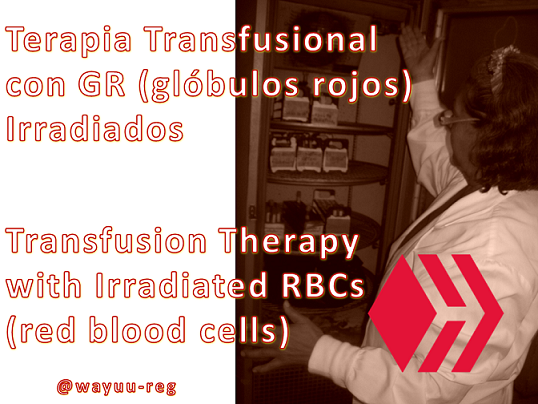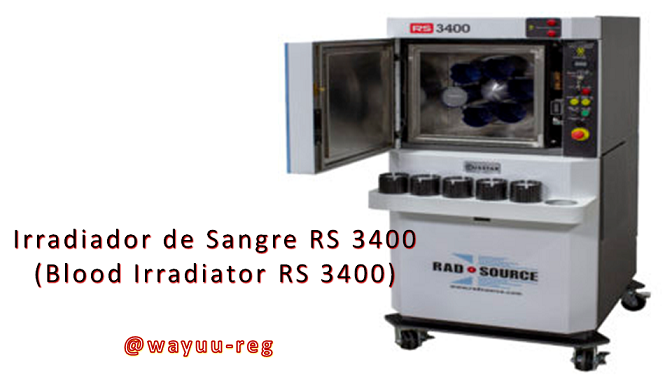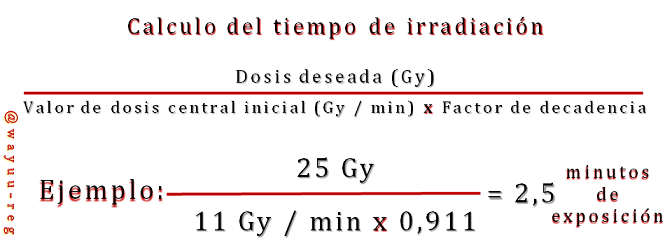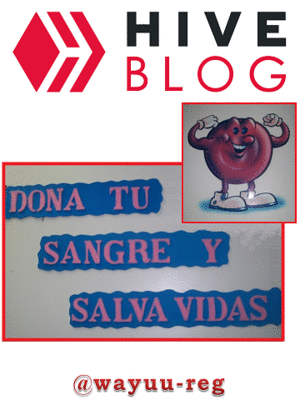Al momento de realizar una transfusión con hemocomponentes, se busca siempre ofrecer la estricta seguridad que este procedimiento amerita, ya que es considerable el riesgo sino se toma en cuenta el protocolo básico que aporta la integridad del paciente.
When performing a transfusion with hemocomponents, the aim is always to offer the strict safety that this procedure deserves, since the risk is considerable if the basic protocol that provides the integrity of the patient is not taken into account.
Desde un principio que se ha utilizado la transfusión sanguínea, los avances científicos han logrado reducir, notablemente, la morbilidad del paciente, evitando la transmisión de enfermedades infecciosas mediante pruebas serológicas que previenen reacciones hemolíticas. Con procedimientos como la Leucorreducción o Irradiación de los hemocomponentes, se previene las reacciones febriles no hemolíticas.
Since the beginning of the use of blood transfusion, scientific advances have achieved a notable reduction in patient morbidity, avoiding the transmission of infectious diseases by means of serological tests that prevent hemolytic reactions. With procedures such as Leukoreduction or irradiation of hemocomponents, non-hemolytic febrile reactions are prevented.

El procedimiento de irradiación de hemocomponentes celulares y plasma fresco no congelado, demuestra cada vez su utilidad para prevenir que se desarrolle una reacción adversa transfusional como la Enfermedad injerto contra el huésped (EICH), la cual es asociada a la transfusión. Siendo una complicación aloinmune de muy baja incidencia, que en muchos de los casos es fatal; se origina por los linfocitos T del donante (transmisor). Estos linfocitos al no ser irradiados se incrementan y se extienden causando una reacción de rechazo en el paciente (receptor).
The procedure of irradiation of cellular hemocomponents and fresh non-frozen plasma is increasingly demonstrating its usefulness in preventing the development of an adverse transfusion reaction such as graft-versus-host disease (GVHD), which is associated with transfusion. Being an alloimmune complication of very low incidence, which in many cases is fatal, it is caused by the donor's T lymphocytes (transmitter). These lymphocytes, when not irradiated, increase and spread causing a rejection reaction in the patient (recipient).
Esta irradiación se fundamenta ionizando las células sanguíneas, en las cuales se provoca un entrecruzamiento químico en el ADN celular sin afectar el normal funcionamiento de las mismas, exceptuando su reproducción. El objetivo es hacer inactivo los LT, dañando mínimamente el resto de las células.
This irradiation is based on ionizing the blood cells, in which a chemical cross-linking of the cellular DNA is provoked without affecting their normal functioning, except for their reproduction. The objective is to inactivate the LT, minimally damaging the rest of the cells.

esterilizando la sangre envasada en bolsas de transfusión. Sirve para inactivar virus que pudieran ser trasmitidos del donante al paciente.
No sólo las bolsas de sangre se pueden irradiar,
también las plaquetas y jeringas cargadas son irradiadas convenientemente en el mismo ciclo.
The RS 3400 Blood Irradiator is a medical device that provides X-Ray irradiation,
sterilizing blood packaged in transfusion bags. It serves to inactivate viruses that could be transmitted from donor to patient.
Not only blood bags can be irradiated, but also platelets and loaded syringes are conveniently irradiated in the same cycle.
Para asegurar que la reproducción de los linfocitos no se ejecute dentro del receptor, deben haber sido sometidos a radiación gamma Cesio 137 (Cs137) o Cobalto 60 (Co60) a una dosis mínima de 2.500 cGy en el punto medio de la bolsa y a una dosis mínima de 1.500 cGy en los otros puntos de la misma. También son sometidos con Rayos X (acelerador lineal / irradiador de hemocomponente), y otros métodos de prevención son los fotoquímicos (psoralenos + LUVA). Por lo que se evita el progreso de la EICH.
To ensure that lymphocyte replication is not executed within the recipient, they must have been subjected to Cesium 137 (Cs137) or Cobalt 60 (Co60) gamma radiation at a minimum dose of 2,500 cGy at the midpoint of the pocket and at a minimum dose of 1,500 cGy at the other points of the pocket. They are also subjected with X-rays (linear accelerator / hemocomponent irradiator), and other prevention methods are photochemical (psoralens + LUVA). Thus the progression of GVHD is prevented.
Para el cálculo del tiempo de irradiación se utiliza el siguiente procedimiento:
The following procedure is used to calculate the irradiation time:

Al concentrado eritrocitario se le debe aplicar la irradiación dentro de las 24 horas, que se cuentan desde el momento de la extracción hasta llegar a 35 días, lo que determina su vencimiento. Cuando la unidad sanguínea ya tiene hasta 14 días desde su extracción, su vencimiento se taza en 28 días. Sí su irradiado se realiza después de los 14 días, sólo debe administrarse antes de 24 horas. Muy importante: si la unidad sanguínea es para una transfusión intrauterina, sin importar la fecha de irradiación, se debe suministrar dentro de las 24 horas siguientes.
Erythrocyte concentrate must be irradiated within 24 hours, which is counted from the moment of collection until it reaches 35 days, which determines its expiration date. When the blood unit is up to 14 days old since its extraction, its expiration is 28 days. If it is irradiated after 14 days, it should only be administered within 24 hours. Very important: if the blood unit is for intrauterine transfusion, regardless of the date of irradiation, it must be administered within 24 hours.
La irradiación causa alteraciones en la membrana, esto conlleva el usar un gran volumen de sangre o componentes irradiados en receptores que padecen de mala funcionalidad renal compensatoria.
Irradiation causes alterations in the membrane, which leads to the use of a large volume of irradiated blood or components in recipients with poor compensatory renal function.
Con este medio preventivo se puede procesar (irradiar) varios tipos de componentes, como: sangre entera, glóbulos rojos sin plasma, concentrados plaquetarios y granulocitarios.
With this preventive medium, various types of components can be processed (irradiated), such as: whole blood, plasma-free red blood cells, platelet and granulocyte concentrates.
Según las indicaciones médicas, se utiliza para prevenir la EIVHAT, en individuos severamente inmuno-comprometiodos, cuando los antígenos del SMHC del donante guardan similitud con los del receptor y cuando los linfocitos transfundidos sean capaces de multiplicarse en el receptor. Se presentan varias indicaciones relativas, como: hemopatías malignas diferentes al Linfoma de Hodgkin, pacientes con tumores sólidos en tratamiento con quimio terapia y radioterapia, también por infección de VIH. Entre las indicaciones absolutas, se encuentran:
- Pacientes con síndromes de inmunodeficiencia congénita
- Trasplantados de médula ósea
- Transfusiones intrauterinas
- Pacientes con enfermedad de Hodgkin
- Receptores de donaciones procedentes de un familiar consanguíneo de 1° o 2° grado
- Transfusión de plaquetas compatibles
- Neonatos prematuros de 1.200 g
According to medical indications, it is used to prevent EIVHAT, in severely immuno-compromised individuals, when the SMHC antigens of the donor are similar to those of the recipient and when the transfused lymphocytes are able to multiply in the recipient. There are several relative indications, such as: hematological malignancies other than Hodgkin's lymphoma, patients with solid tumors undergoing chemotherapy and radiotherapy, and also HIV infection. Absolute indications include:
- Patients with congenital immunodeficiency syndromes.
- Bone marrow transplanted patients
- Intrauterine transfusions
- Patients with Hodgkin's disease
- Recipients of donations from a 1st or 2nd degree blood relative
- Transfusion of compatible platelets
- Premature neonates up to 1,200 g.
La hemovigilancia de enfermería debe tener siempre en cuenta que: el paciente (receptor) al cual se le cumplirá muchas transfusiones (politransfusión) tiene que tener un donador frecuente, es decir un familiar consanguíneo (hermano, por ejemplo), que dona su médula ósea a otro. Es obligatorio que sean (ambos) HLA 100% compatibles; al cabo de cierto tiempo, siempre se presenta un pequeño porcentaje de incompatibilidad, lo cual hace reacción injerto-huésped, lo que significa que el injerto de médula externa se ha hecho sensible a la continua transfusión, destruyendo órganos; en donde tarde o temprano se sabía que pasaría dicha sensibilización. Para evitar esta alteración, se debe tratar con urgencia su disminución. Por ello, se le suministran GR irradiados que disminuyen el riesgo a la enfermedad y retarda la viabilidad global. No se recomienda que la sangre del donador de la médula sea suministrada al paciente debido al procedimiento que se ejecuta en el banco de sangre, lo empieza a sensibilizar.
Hemovigilance nursing must always take into account that: the patient (recipient) who will receive many transfusions (polytransfusion) must have a frequent donor, i.e. a blood relative (sibling, for example), who donates his bone marrow to another. It is mandatory that they (both) be 100% HLA compatible; after a certain period of time, a small percentage of incompatibility always occurs, which causes graft-host reaction, which means that the external marrow graft has become sensitive to the continuous transfusion, destroying organs; where sooner or later it was known that this sensitization would happen. To avoid this alteration, its decrease must be treated urgently. For this reason, irradiated RBCs are administered to reduce the risk of disease and delay overall viability. It is not recommended that the marrow donor's blood be given to the patient because the procedure performed in the blood bank starts to sensitize the patient.
En cuanto a las recomendaciones adicionales, se ejecuta en receptores inmuno-comprometiodos de células progenitoras hematopoyéticas o de trasplante de órganos. En pacientes con desórdenes hematológicos quienes serán sometidos a trasplante alogénico de médula ósea inminentemente. En transfusiones intrauterinas. En neonatos que vayan a ser sometidos a exanguinotransfusión o al uso de membrana de oxigenación extracorpórea. En pacientes con Enfermedad de Hodgkin. En pacientes con inmunodeficiencia celular congénita.
As for additional recommendations, it is performed in immuno-compromised recipients of hematopoietic progenitor cells or organ transplantation. In patients with hematological disorders who will undergo imminent allogeneic bone marrow transplantation. In intrauterine transfusions. In neonates who will undergo exchange transfusion or extracorporeal membrane oxygenation. In patients with Hodgkin's disease. In patients with congenital cellular immunodeficiency.
Tomando en cuenta las contraindicaciones y todas las precauciones, se considera que en caso de no ser utilizados en el paciente específico, podría utilizarse de forma estándar tomando la precaución de colocar como fecha de vencimiento el día 28 después del procedimiento, en caso de que la caducidad original sea posterior a este lapso.
Taking into account the contraindications and all the precautions, it is considered that in case of not being used in the specific patient, it could be used in a standard way taking the precaution of placing as expiration date the 28th day after the procedure, in case the original expiration date is after this period.
Para administrar la dosis, se debe suministrar sin variación con relación a la transfusión de GR no modificados. Todos estos procedimientos, la leucorreducción y la irradiación sanguínea, son necesarios en el mantenimiento y seguridad para reducir al máximo las posibles reacciones postransfusionales como la “injerto contra el huésped”; evitando colocar en peligro (aún más) la salud del paciente.
To administer the dose, it should be given without variation in relation to the transfusion of unmodified RBCs. All these procedures, leukoreduction and blood irradiation, are necessary in the maintenance and safety to minimize possible post-transfusion reactions such as "graft-versus-host"; avoiding to endanger (even more) the patient's health.
Ya son muchas las metodologías recomendables para la reducción de patógenos en la sangre; cualquiera de ellas puede ser una alternativa que se hace prometedora para desplazar la irradiación gamma en algunos componentes sanguíneos, como los métodos de reducción de patógenos que se usan en unidades plaquetarias, como profilaxis contra TA-GvHD. Hasta ahora, ninguna organización para la salud a nivel mundial, no han aprobado ni autorizado otro método de reducción patogénica de glóbulos rojos. Los centros de salud con sus servicios de banco de sangre, deben seguir empleando la irradiación Gamma y Rayos X. No a todos estos hemocomponentes por aféresis (plaquetas) se utilizan para reducir sus agentes patógenos, deben cumplir con todas las especificaciones en cuanto al volumen y su contenido, para que puedan ser calificadas en el tratamiento. Así entonces, lo más probable es que la dependencia a los procesos con rayos gamma y rayos X se siga utilizando por varios años.
There are already many recommended methodologies for pathogen reduction in blood; any of them may be a promising alternative to gamma irradiation in some blood components, such as pathogen reduction methods used in platelet units as prophylaxis against TA-GvHD. So far, no other method of pathogen reduction of red blood cells has been approved or authorized by any health organization worldwide. Health centers with their blood bank services should continue to use Gamma and X-ray irradiation. Not all of these apheresis hemocomponents (platelets) are used to reduce their pathogens, they must meet all the specifications in terms of volume and content, so that they can be qualified for treatment. Thus, the reliance on gamma and X-ray processes will most likely continue for several years to come.
¡ Muchísimas gracias por su amable atención !
Y recuerde que donar sangre,
es salvar muchas vidas
es salvar muchas vidas
Thank you very much for your kind attention !
And remember that to donate blood,
is to save many lives
is to save many lives

Bibliographic Sources (Fuentes Bibliográficas)
- Terapia Transfusional (Transfusion Therapy)
- Hemoterapia y Reacción Hemolítica Transfusional
(Hemotherapy and Transfusional Hemolytic Reaction)
- Revista Controversias # 5 (2012) (Controversies Magazine # 5 2012)
- Glóbulos Rojos Irradiados (Irradiated Red Blood Cells)
- Leucorredución e irradiación de hemocomponentes
(Leukoreduction and irradiation of hemocomponents)
Todas las imágenes de esta publicación fueron editadas con la aplicación Paint y PowerPoint como imagen PNG
La imagen GIF, con fotografías personales, fue editada con la aplicación en línea Picasion.com
Se utilizó el logo de Hive.blog (CC0)
La traducción fue realizada por DeepL
Me complacería mucho recibir su valioso comentario y constructivas sugerencias sobre el tema presentado, ya que serán consideradas para la mejoría de las futuras publicaciones
All images in this publication were edited with the Paint and PowerPoint application as a PNG image
The GIF image, with personal photos, was edited with the online application Picasion.com
The Hive.blog logo (CC0) was used
The translation was made by DeepL
I would be very pleased to receive your valuable comments and constructive suggestions on the presented topic, as they will be considered for the improvement of future publications.
Congratulations @wayuu-reg! You have completed the following achievement on the Hive blockchain and have been rewarded with new badge(s):
Your next payout target is 250 HP.
The unit is Hive Power equivalent because post and comment rewards can be split into HP and HBD
You can view your badges on your board and compare yourself to others in the Ranking
If you no longer want to receive notifications, reply to this comment with the word
STOPTo support your work, I also upvoted your post!
Check out the last post from @hivebuzz:
Support the HiveBuzz project. Vote for our proposal!
¡El esfuerzo de una investigación vale oro!
Felicitaciones por tu gran esfuerzo y dedicación al publicar este tema científico, el cual merece de mi parte un gran aplauso por su originalidad y calidad de explicación que resume parte tus conocimientos en el área de salud pública.
Dios te bendiga @wayuu-reg
The effort of a research is worth gold!
Congratulations for your great effort and dedication in publishing this scientific topic, which deserves from me a big applause for its originality and quality of explanation that summarizes part of your knowledge in the area of public health.
God bless you @wayuu-reg
Cada día aprendo más de tu trabajo y de tu dedicación al mismo. Te admiro y te bendigo siempre. Amén!
Thanks for your contribution to the STEMsocial community. Feel free to join us on discord to get to know the rest of us!
Please consider delegating to the @stemsocial account (85% of the curation rewards are returned).
You may also include @stemsocial as a beneficiary of the rewards of this post to get a stronger support.